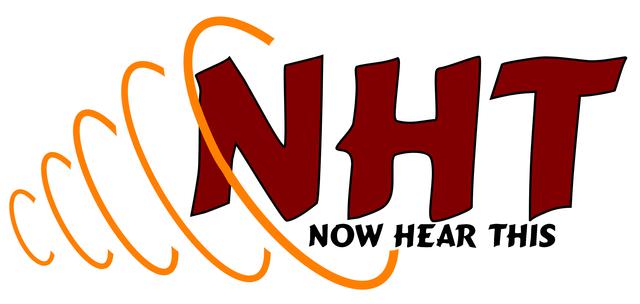What is Auracast and How Does It Work?
Auracast™ is a next-generation wireless audio broadcasting feature built on Bluetooth LE (Low Energy) Audio. Developed by the Bluetooth Special Interest Group (SIG), Auracast can stream sound to an unlimited number or listeners whereas Classic Bluetooth allows only one-to-one streaming of sound. For example, a smartphone, TV, or public transmitter, can stream audio to multiple Bluetooth headphones, hearing aids or other receivers at the same time, making it an ideal assistive listening technology. It differs from classic Bluetooth also in theat it places lower demands for power in devices like hearing aids, ensuring longer intervals before batteries need to be replaced or re-charged.
Where performing arts venues, places of worship and other places where people gather, and where aural communication is integral to the experience, Auracast offers a technology that is less expensive to install than competitive systems, provides comparable or superior sound quality, and is applicable in many settings where competing systems are not.
Unlike Classic Bluketooth, Auracast does not require that devices be paired to function. With no pairing, you simply “join” a broadcast, similar to connecting to Wi-Fi. With many devices, it offers custom listening: Each listener can control his or her own volume and device settings. If the receiver is hearing aids, they also "adjust" frequencies being heard to match that user's audiogram.
How Does It Work?
Three major elements make Auracast work:
• Broadcaster - A smartphone, TV, dongle, or other device able to transmit (stream) the sound from a microphone, or some other electronic sound-producing device.
Broadcaster - A smartphone, TV, dongle, or other device able to transmit (stream) the sound from a microphone, or some other electronic sound-producing device.
• Assistant - A device (such as a smartphone, Sennheiser Assistant, Auri Assistant), or Infinium Receiver that can wirelessly detect an available stream or streams, allowing the user to select the desired stream if there is more than one.
Assistant - A device (such as a smartphone, Sennheiser Assistant, Auri Assistant), or Infinium Receiver that can wirelessly detect an available stream or streams, allowing the user to select the desired stream if there is more than one.
• Receiver - Yet again, a smartphone can be part of the process, acting as a receiver, or it can be hearing aids, earbuds, a transceiver with earphones or a neckloop , or any of many other devices.
Receiver - Yet again, a smartphone can be part of the process, acting as a receiver, or it can be hearing aids, earbuds, a transceiver with earphones or a neckloop , or any of many other devices.
There are instances where an Auracast stream can can connect directly to a stream withiut the need for an assistant. Auracast Broadcast Mode Auracast so, once the transmitter is active, any compatible receiver (like the MoerDuo in RX mode) can automatically detect and join the broadcast—just like tuning into a radio station. Also, in practice, if a receiver already knows which stream to join (say, via a QR code or saved broadcast ID), it can skip the assistant entirely and just tune in. This is especially useful in public venues or accessibility setups where simplicity and speed matter.
There are two types of Auracast streams
• Public Auracast streams are open to anyone within range. Think of them like open Wi-Fi networks—you don’t need a password or special permission to join. These will become common in places like transportation terminals, on trains and buses, in stadiums, or where directions are needed to guide the public.
Public Auracast streams are open to anyone within range. Think of them like open Wi-Fi networks—you don’t need a password or special permission to join. These will become common in places like transportation terminals, on trains and buses, in stadiums, or where directions are needed to guide the public.
• Private Auracast streams are encrypted and require authorization to access—this ensures that only intended users can connect.
Private Auracast streams are encrypted and require authorization to access—this ensures that only intended users can connect.
• Both types can coexist in the same space without interfering with each other, which makes Auracast super versatile in crowded environments.
Both types can coexist in the same space without interfering with each other, which makes Auracast super versatile in crowded environments.
Latency
Auracast, built on Bluetooth LE Audio, typically delivers latency (an echo) under 40 milliseconds, and in some optimized setups, it can dip as low as 20 ms. This makes it excellent for real-time applications like watching videos or live presentations without noticeable lip-sync issues. However, when compared to traditional assistive listening technologies like induction loops, infrared (IR), or FM systems, Auracast is slow.
Wi-Fi audio, on the other hand, is a bit of a mixed bag. While it can offer higher bandwidth and better audio fidelity, its latency varies widely depending on the protocol and can range from 100 to 200 milliseconds. So in terms of raw latency, Auracast is significantly faster than most Wi-Fi-based audio systems.
Major applications of Auracast
For people with hearing loss, its use as an assistive listening technology will be the principal use for the Auracast feature in hearing aids. As it becomes more common, they will, though, also derive the many other benefits of the technology, such as hearing the announcer over the roar of the crowd at a football game, or the flight delay announcement at the airport. Like other fans, it allows hard of hearing users to connect to the TV in the gym or sports bar showing the program or contest they want to watch. In the home, in addition to ending the battle for the remote volume control, it allows the placement of multiple loudspeakers for music without the fuss of speaker wires.
What devices are available to use Auracast
An enormous variety of devices have already been marketed that feature Auracast connectivity and the list continues to grow as this is being written. See the Auracast Capable Devices section of this website here.
Auracast Transmitters
An Auracast transmitter is a device that sends out an Auracast broadcast. This could be anything from a smartphone, laptop, or TV to even a public address or sound system.
Many modern smartphones and tablets are equipped with Bluetooth LE Audio and Auracast. For example, Samsung has confirmed that its Galaxy S23 and later, Galaxy Z Fold 5/6, Galaxy Z Flip 5/6, Galaxy Tab S9 FE and later, and even older devices with the One UI 6.1 update will support the feature.
Auracast Assistants
Devices people already have, like smartphones and tablets can function as assistants if they are Auracast enabled. There are also devices or apps specifically intended as assistants from such resources as JBL, Sennheiser, Soundcore, and others.
Other Auracast Information
The number of people who can connect to an Auracast is unlimited. The range for a competent transmitter can be over 300 feet. For most small transmitters, the range would likely be 65 to 100 feet.
How many devices can you connect to an Auracast transmitter?
With a professional-grade transmitter, the number of people who can connect to a
particular Auracast is determined by the size of the room .

